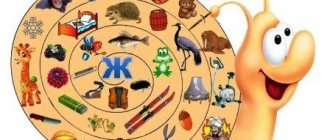When they talk about the early development of a child, they mean the intensive development of his abilities between the ages of 0 and 34 years. After scientists found out that the development of brain cells is 70% complete by the age of three, and 90% by the age of six or seven, it became clear how many opportunities we are missing by not using the innate potential of the baby.
One of the methods that promotes the early development of children is the Glen Doman method. This is one of the most famous programs for the early development of children in the mental and physical aspects. Glen Doman was sure that every child has a huge talent hidden in him, which can quickly develop and open up great chances for the child in the future. This is what an American neurophysiologist decided after studying in detail the developmental characteristics of children. Doman and his early development methods are a great contribution to the successful future of your child.
Who is Glen Doman?
Glen Doman was born in the United States of America. In 1940 he received a diploma as a physiotherapist. After that, I began to study the children's brain. But then World War II began and the Japanese attacked the Pearl Harbor military base. All this prevented the scientist from continuing his research. Doman went to the front, participated in many battles, became a lieutenant and received a military award. When he returned from the war, he decided to continue the work he had once started. He founded the Institute for Achieving Human Potential, where he worked and researched children's brains until the end of his days.
Principles of the technique
The Doman Method follows these principles:
- You should start teaching your child at a very early age. The younger your son or daughter is, the faster he will learn any skill.
- It is imperative to encourage your child and admire his victories.
- It is necessary to form a trusting relationship between parents and baby. And also treat him with respect.
- Studying should bring positive emotions.
- You need to create the right atmosphere to study.
- It is necessary to stop training before the baby himself has such a desire.
- Constantly learn something new.
- Be gradual. Studying should be regular.
- You should not check what the child has learned.
- Study guides must be prepared in detail and several days before class.
- If your son, daughter, or even the parents themselves become bored, you need to finish your studies.
Physical development according to the Doman method
Glen Doman paid the most attention to the physical development of children. The scientist believed that it has a direct relationship with the intellectual potential of children. It was for this reason that he was sure that it was necessary to physically develop a child from the very moment he was born.
A child by nature needs to swim, walk, crawl, and grab a lot. From birth, the baby must be given freedom of movement and everything must be done to ensure that he develops physically. If mom and dad help the baby to be active from early childhood, then their son or daughter will develop mentally much more intensively compared to their peers. Therefore, you should constantly run and jump with your baby, and introduce him to sports and physical education from early childhood.
What is early development
The term “early development” means the intensive development of the baby’s abilities, starting from his birth. Modern psychologists and teachers believe that 7 years is very late to begin a child’s education, because his brain is ready to perceive new information from the first seconds after birth. Therefore, parents are strongly recommended to start working with their child from the very first days of his life.
In accordance with fashion trends, a lot of developmental children's centers, clubs and entire schools have appeared that are ready to accept a child and teach him the basics of reading, mathematics, drawing and other useful things from the age of 6 months. This is where the parents were divided into 2 camps: some argue that newfangled trends are depriving the child of childhood, that he should play enough with toys, and only then start studying - after all, this is exactly how they and their parents were raised, and everyone grew up successful and successful. fully developed people.
Supporters of the second point of view enthusiastically accepted the new view and actively began to develop and educate infants, sometimes in the heat of the moment depriving them of that very “childhood.” Who is right? We invite you to find the “golden mean” yourself by understanding the essence of the proposed development methods and independently answering the questions of what they are intended for and how they work. In this case, you yourself will be able to develop your baby, without turning the process into boring lessons and duties, but, on the contrary, enjoying communication with each other.
• Each child is individual and develops at an individual pace. You can't compare him with other children.
• The goal of any early development method is not to “cram” as much knowledge and facts into a child as possible, but to teach him to obtain this knowledge - developing his mental and physical abilities.
• Training should bring mutual pleasure to both the baby and the mother, only in this case it will be successful.
How to teach reading using the Doman method?
The scientist believed that even a baby who is barely 1.5 years old can start teaching reading. You just need to follow his method.
To do this, parents need cards with a set of words. Their parameters should be 10*50 centimeters, the words should be bright red, the font should be 1.5 centimeters thick, and each letter should be 7.5 centimeters high. You shouldn’t introduce your child to difficult things from the very beginning.
words. You should try to find words that the baby is very familiar with (grandmother, grandfather, cat, dog, house, table, chair, water).
You need to follow this training scheme:
- A set of words is a group of 5 words that are united by one theme.
- You need to study 3 times every day.
- Monday. Show your son or daughter one set of words. Speak the words in a clear, even voice. You should not spend more than 15 seconds on each word. There are 3 lessons with one set of words.
- Tuesday. Add one more to the set of words already shown. There are 6 lessons per day (3 with a previously studied set of words, 3 with a new one) and two sets of words.
- Wednesday. 3 sets of words and 9 lessons.
- Thursday. 4 sets of words and 12 lessons.
- Friday. 5 sets of words and 15 lessons in one day.
- Saturday. Add another set of words, but at the same time exclude one word from the previous five.
About cards - an important component of the technique
To stimulate the child's brain, cards with drawings or photos of different items and objects are used. They have already been mentioned, and now we will consider everything in detail. They contain different images and inscriptions that characterize them.
The question of the appropriateness of swaddling worries many parents, let's try to figure out whether it is safe: swaddling a newborn: the pros and cons
The cards are shown to the child and the names of the objects are pronounced. All cards are divided by topic, and by looking through them, the child himself is able to create rules in his brain that all images obey. Children seem to photograph images and remember them. Doman was confident that the competent use of this technique could make geniuses out of children.
The cards you need for training can be:
- buy in a store;
- print selected sets from the Internet;
- make it yourself.
Requirements for cards: a white background is required, a large realistic picture, a large clear inscription under the picture in red, card size 28 cm x 28 cm, a little larger is possible.
Parents should think carefully about what information they will provide to their child. It must be new so that interest in classes is not lost. All knowledge is presented to children gradually, from simple to complex. For example, from words to phrases, then to sentences.
The child is taught to count and read in the same way. Mathematical knowledge is based on mental arithmetic. Here children are faced with quantity. Cards with dots in different quantities are shown, which teach you to determine the number of objects at once, even without counting them. This will help you further perform calculations of large values in your head. When learning to read, they use cards with written words. A child, looking at a word, remembers it. Doman believes that by mechanically memorizing words, a child will subsequently be able to understand the laws by which written text reflects oral speech.
How to teach counting using Doman's methods?
Parents, when they hear the word three, imagine a number, and their kids think in facts. They represent three mandarins, three houses, three cats, but
They don’t even try to match the word three with the picture of the number. It was this quality specific to babies that Doman relied on when he created his program. If you allow your child to work with specific facts rather than abstract terms, then he will have an excellent opportunity to learn to count without counting, to understand the number of objects depicted, and to learn about basic operations in mathematics.
To teach your child to count, you will need to take 100 cards measuring 27*27 centimeters. The cards randomly depict red dots ranging from 1 to 100. Their diameter should not be more than 2 centimeters. During lessons, the child first learns the term quantity, then the term equation. Then you can start teaching your child how to solve math problems. And only then, according to Doman’s method, should the child be introduced to the graphic representation of numbers, the concept of number. And only then start solving digital equations.
Glen Doman's Early Development Methodology. From 0 to 4 years
Before you start classes
Working with a child using the Doman method is reminiscent of creating a complex computer program. Therefore, each piece of knowledge that the baby receives is called a “bit of information.”
• A child's brain is programmed to learn from birth.
• Studying is effective only during the period of brain growth. The human brain grows up to 7–7.5 years, but it grows most actively in the first three years.
• All babies have incredible abilities for languages.
• The faster the formation of the higher parts (and especially the cortex) of the brain occurs, the smarter and more savvy your baby will be.
Almost from birth, a child can be shown large cards with “bits of information.” Use word cards to teach reading. For teaching mathematics - cards on which the number is replaced by the corresponding number of dots. To obtain encyclopedic knowledge - cards with pictures. Such a card can depict an animal, an insect, or a work of art. The name of the item is written on the back, which is what the child must read. The more detailed (according to Doman, the more informative) the explanation, the better. For example, the caption “large Galapagos tortoise” is preferable to “tortoise.”
Undoubtedly, Glen Doman's method is useful and, when properly organized, effective, although, like any method, this system has its drawbacks. However, you should not immediately abandon the method proposed by Doman. Remember the rule of the “golden mean”? This is precisely what must be observed, skillfully combining the elements of this system with other early development methods, with common sense, the characteristics of your child, as well as your lifestyle.
Glen Doman states: “If you show a child not just 10 random cards, but 10 cards belonging to a certain category, for ten seconds, you will thereby give him the opportunity to make 3,628,800 combinations from the knowledge he has acquired. Now he will not just remember ten bits of information for the rest of his life, but will master an entire system of knowledge.”
The Doman system is good because the child learns a large amount of information with ease, in a pleasant way for him, without violence, threats and similar “educational” delights. Parents can always find other ways to develop creativity and exploration.
Before you start, be sure to pay attention to a few important points.
• Classes using this method will require certain efforts and expenses from parents - after all, for a long time they will have to make thousands of cards with dots, words, images of animals, plants, and various objects.
• In the Doman system, the child is a passive object of learning. He sits, and his mother shows him one or another series of cards, telling him a strictly defined set of information about each. There is no dialogue and joint creativity with the child.
There is no need to abandon traditional “grandmother’s” methods. Let your child listen to as many fairy tales, songs, and poems as possible, and they do not always have to be accompanied by pictures, so that the child’s brain learns to independently complete the visual sequence to the text. This will help develop the baby’s speech and form text interpretation functions in time. Don’t forget about such ancient “developmental games” as traditional nursery rhymes, pestles, and finger games.
Scientists believe that we must not forget about the emotional and cognitive development of the child, since it is impossible to develop only one (in this case, visual) component. A “fact” must be touched, touched and licked, that is, examined with all the senses, and then, using its relationships with other “facts”, its place in the world must be determined.
• If you use only pictures with captions when teaching, as Doman recommends, the child does not develop textual thinking: the ability to independently read (or listen) and analyze the text, extract the necessary information from it.
• Doman compares the human brain to a computer, a very advanced one, endowed with a huge amount of memory, but still a computer that needs to be equipped with a good database to work successfully. But a child is not a computer, and he needs more than a certain amount of information.
So, if you decide to start training your child using the Glen Doman method, listen to the advice of specialists and experienced parents.
• There is no need to strictly follow all recommendations; Be sure to combine Doman’s methodological developments with other activities and educational games.
• Focus on the baby's reaction. Doman recommends showing the cards very quickly, holding each one for no more than 1-2 seconds. The brain of a small child works differently than that of an adult, and the baby seems to “photograph” the picture, and then processes the information received at rest. For children of the first - beginning of the second year of life, this is really true. But a one and a half to two year old baby will definitely let you know that this technique no longer suits him. Most likely, he will begin to take the album away from you, look at the pictures for a long time, and ask questions. Listen to your baby, and you will definitely understand exactly how to deal with him. Rely on your intuition, because any ready-made method is just a scheme from which you need to choose what seems useful and necessary specifically for your baby.
• Never do something that you don't like and that you think your child doesn't like.
• Do not take seriously Doman's assertion that a child's only need is to learn, and useless play is just a parent's way of “getting rid of” the baby. Psychologists have long proven that play for a child is a simulation of the world and an opportunity for self-expression.
• Work with your child for as long as you can. Don’t worry that you can’t fit into your daily routine showing several blocks of cards three times a day, most physical exercises, etc. It’s worth recalling that the technique was originally developed for children suffering from various diseases, and parents were ready to “live for the child.” Their purpose in life was to get them back on their feet. Is such sacrifice necessary for a healthy baby? Will parents be happy who have completely subordinated their lives to his education? And will this bring happiness to the child himself?
• When practicing according to the Doman method, use only what you can do. In any case, it will be better than nothing.
• Do not ask your child to give you answers, play with you, or read to you when he is not in the mood, just because it is time for the next “portion” of knowledge.
• The main thing is to try to talk with your child as much as possible on any topic. This is the key to your success.
• Provide your child with as many ways as possible to obtain information, not just cards. Let your baby have maps, books, a microscope, musical instruments and much more at his disposal that you can afford. The environment in which a child lives must be nurturing.
• The information you give to a small child should be based on the principle of “The child and his environment”, and its boundaries should be expanded depending on the age of the child. For example, you can show your child cards with household items, fruits and vegetables, plants of the area in which you live, domestic and wild animals that he can see or which are described in his books. Cards depicting what children are doing (walking, sitting, swimming, drinking from a bottle, smiling, sleeping) are very useful. You can make a series of cards that will depict representatives of various professions: painter, driver, fisherman, doctor, salesman, clown, etc. All this not only broadens the baby’s horizons, but also develops his speech. For ease of use, insert the cards into photo albums or folders with transparent pockets - files, and sign the pictures in large, clear letters. Then the baby will not only remember the pictures, but also gradually learn to read.
• Rejoice at every success of your child, even the slightest attempt to express himself, especially if this desire is noticed by you for the first time.
• Improve yourself, never stop there, look for answers to children's questions together with your baby, reason.
• Do not burden your child with useless information. To prevent obscure abstract facts from hanging in the air, it is good to combine such activities with reading your favorite books. For example, when reading Russian folk tales, prepare a series of cards with animals and plants that are mentioned in them, images of ancient household items (spinning wheels, spindles, rockers, bast shoes, etc.). If your child endlessly demands to reread “Aibolit”, it’s time to tell him what Africa is and show it on a geographical map, make and review the album “Beasts of Hot Countries”, in which there will be images of animals cured by Aibolit.
• Try to give your child not individual facts, but systematically organized information; present it from different sides, from different points of view, cover the same topic not only on cards, but also in games, posters, books, and other aids.
• Young children are much more capable of learning than anyone else.
• Young children are sure that the most wonderful gift for them is the attention that adults, especially mom and dad, give them completely.
• The best teachers are parents.
• They can teach their child absolutely everything that they themselves know, as long as this knowledge is true and based on facts.
• Do not give “knowledge tests”: testing reveals only what has not been learned.
• Learning is a game that ends before the child gets tired.
NOTES FROM EXPERIENCED PARENTS
Marina F
.: “My daughter and I started doing Doman training from the age of 3 months. We started with the development of physical abilities. Thanks to these exercises, the child was able to walk with support and crawl at 3 months; the child began to sit up at 4 months, and to walk on his own at 6.5 months. Moreover, opponents of such development only say that such activities are allegedly harmful to the child’s spine. I will say right away that all Doman’s exercises for this period of development are based on movement without stress on the spine. Thanks to these exercises, the muscles and ligaments of the spine are strengthened. And the question: “Why should a child crawl at 3 months or walk at 6 months?” - I don’t understand. Maybe it would be more logical to assume that it is harmful to swaddle a child and not allow him to move? And if a child can walk or crawl, he gets the opportunity to open new horizons for understanding the world around him. At least my child was delighted.
Then from 7 months we began to learn to read. It was an exciting game for a child. Again, I don’t understand those who ask: “Where is childhood?” Where are the necessary children's games? “Our training did not take more than half an hour a day, here is your answer - a whole day for other games. The result of the classes was that a child of 1 year 8 months read children's books on his own. Moreover, to avoid problems with long and unknown words, we, in addition to whole words, also learned all known syllables. From the age of 10 months they learned to count. Now my daughter is 2 years and 3 months old, we count to 100, do all the simple mathematical operations, and begin to study the multiplication table.
I will give the main argument why I am “for” Doman. Most children who are not prepared for school do not have time to master simple counting and mathematical operations by the end of the first grade, and then in the second grade - the multiplication table. The material is becoming more complex. Children are trying to understand the multiplication table without really knowing how to count. And the snowball begins: the child has not learned one thing, but he needs to learn something else. And so on until graduation. And initial knowledge polished to the ideal helps, and does not hinder, the assimilation of the school curriculum. In life, it will be easier for a child to understand other simple and complex things.”
Advantages of the technique
Doman's development method also contributes to the physical development of children. Doman identified 7 stages in a child's progression from infancy to 7 years. These stages go along with the stages of brain development. In the first period, the upper parts of the spinal cord control hearing, vision, manual skills and movement. In the finishing period they
control the upper parts of the cerebral cortex. Any subsequent stage, as it improves, removes the old stage and controls different roles of the brain. The jump from one level to the next is illustrated, according to the program, by a certain number of gestures and actions. A child who is not enrolled in the program goes through these stages in 6.5 years. And children studying according to Glen Doman's course complete these levels in 3.5 years.
Plan your activities
Parents must plan lessons and be consistent in following the chosen schedule. Doman's method requires time and effort; organization and preparation of new material before lessons is one of the key success factors. If you have chosen one or another course by Glenn Doman, before you start lessons with your baby, study the entire program yourself to the end, and then plan a lesson plan, breaking all the material into smaller and more detailed components.
The success of the Doman technique is that it is built on systematic execution and clarity, although it is full of spontaneity and fun.
Disadvantages of the technique
- An excessively heavy load on a child’s brain can lead to negative consequences in the form of mental disorders, emotional swings, problems with society, and extreme sensitivity.
- The child’s lack of initiative, lack of creative and constructive processes in learning.
- The child often does not have enough time to communicate with friends, play games, or have hobbies.
- Not all senses work.
- When learning to read, words are memorized mechanically.
- According to the program, you need to accompany the readable text with images. In the future, it will be difficult for a child to learn to read texts without pictures; it will be difficult for him to understand the material he reads. This leads to a child’s lack of desire to do things that he is not interested in or is not good at.
- Lack of active gaming activity.











